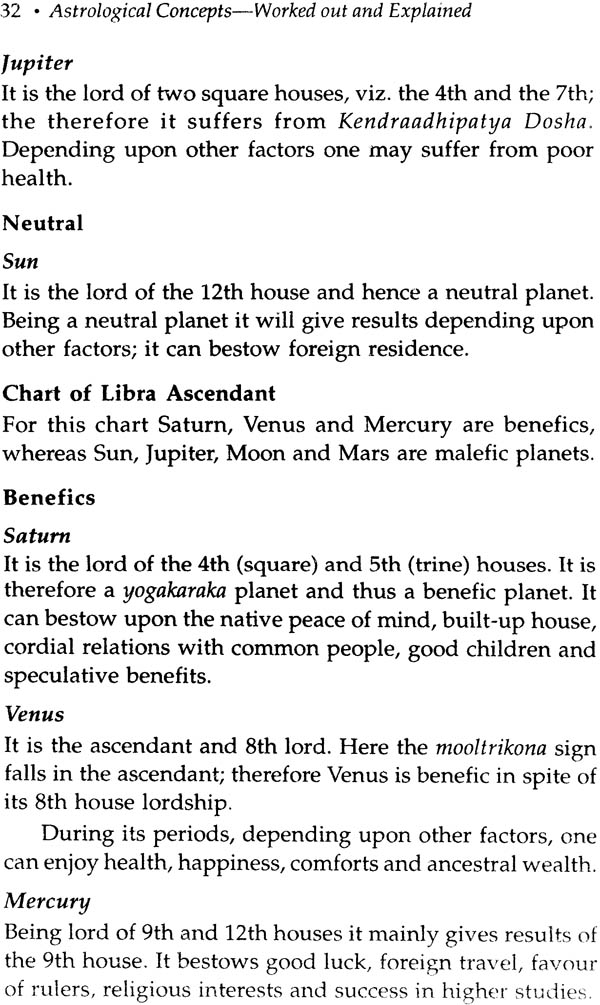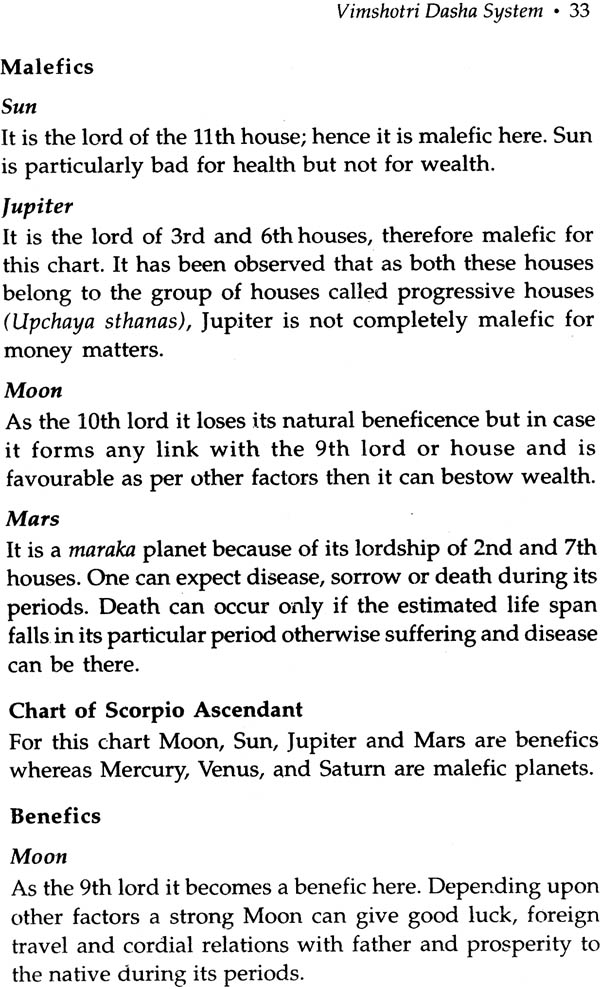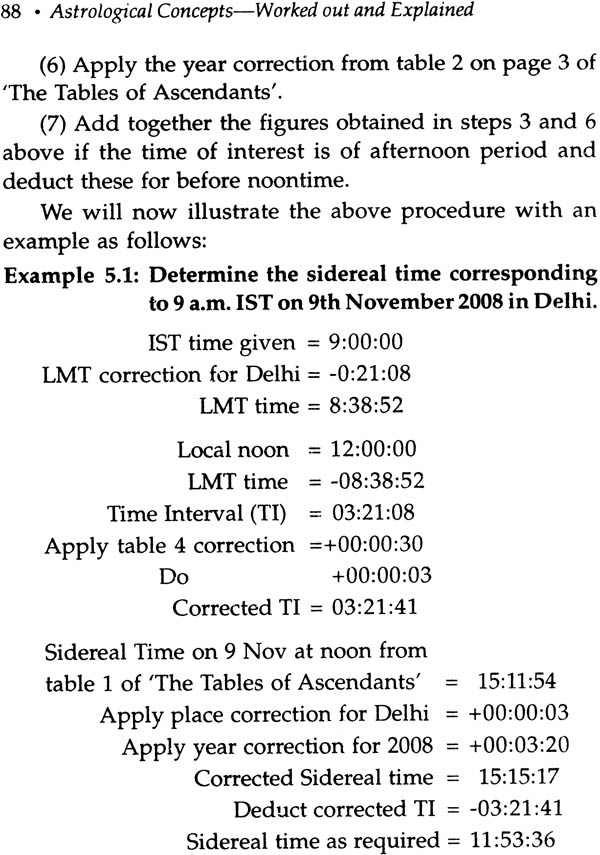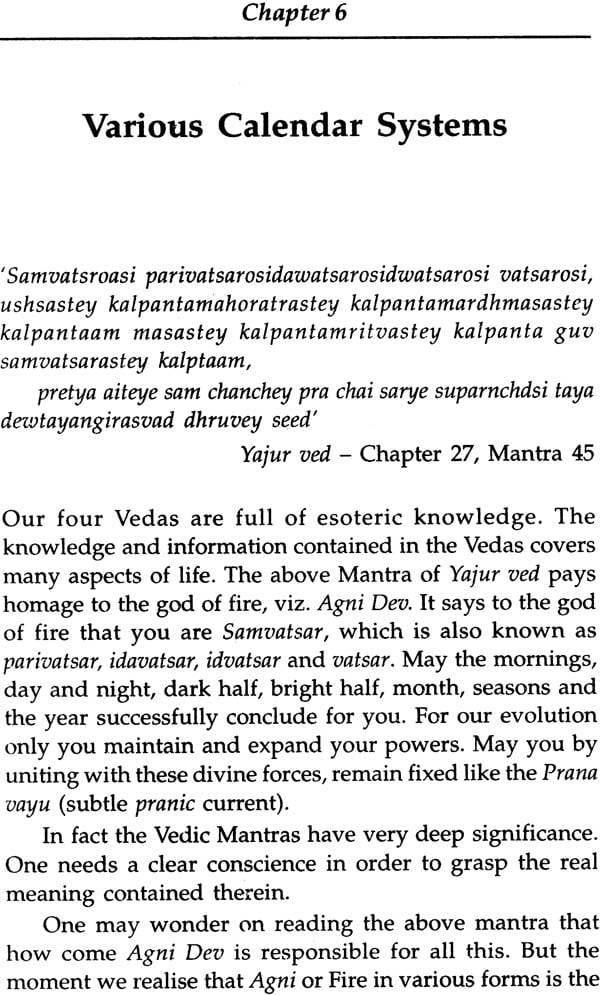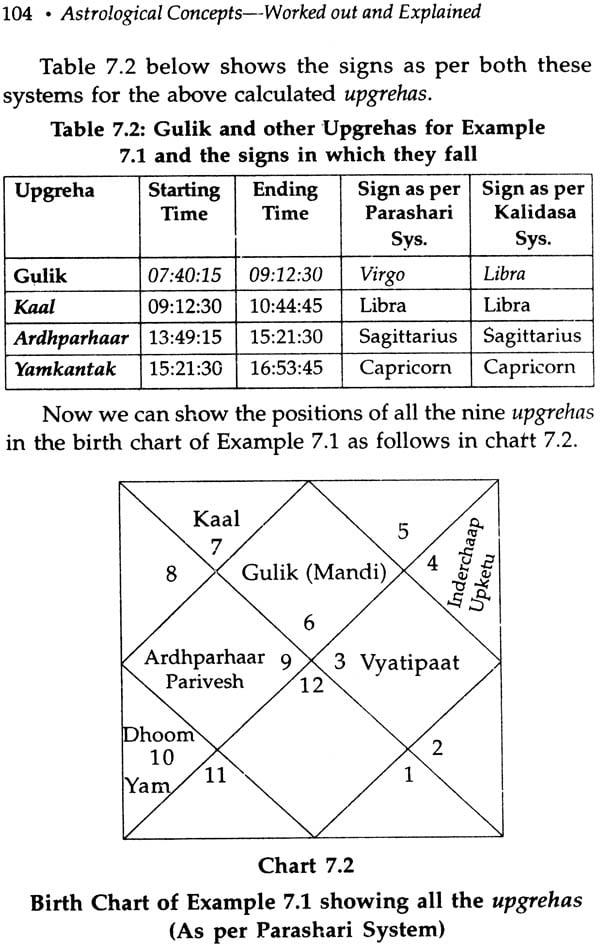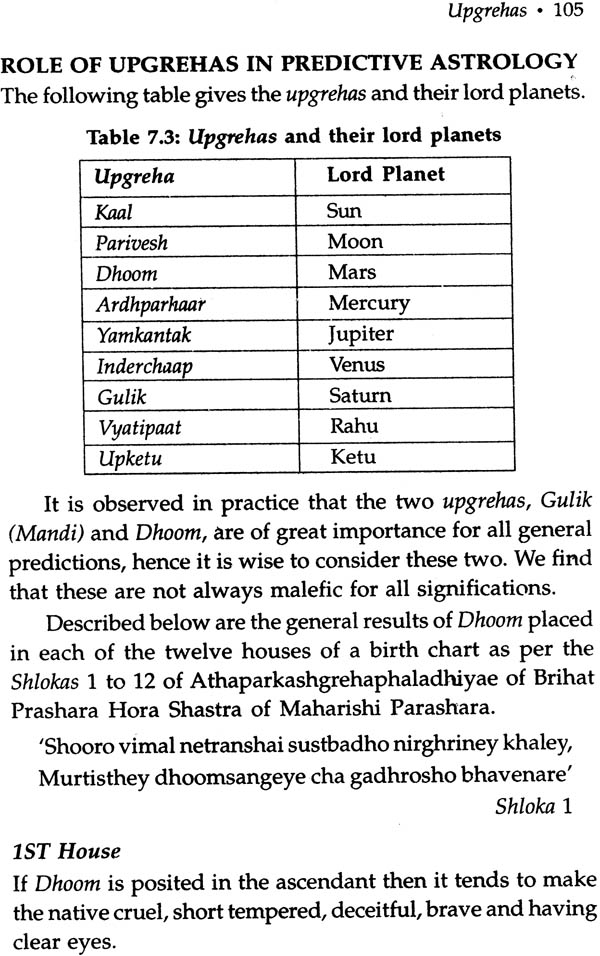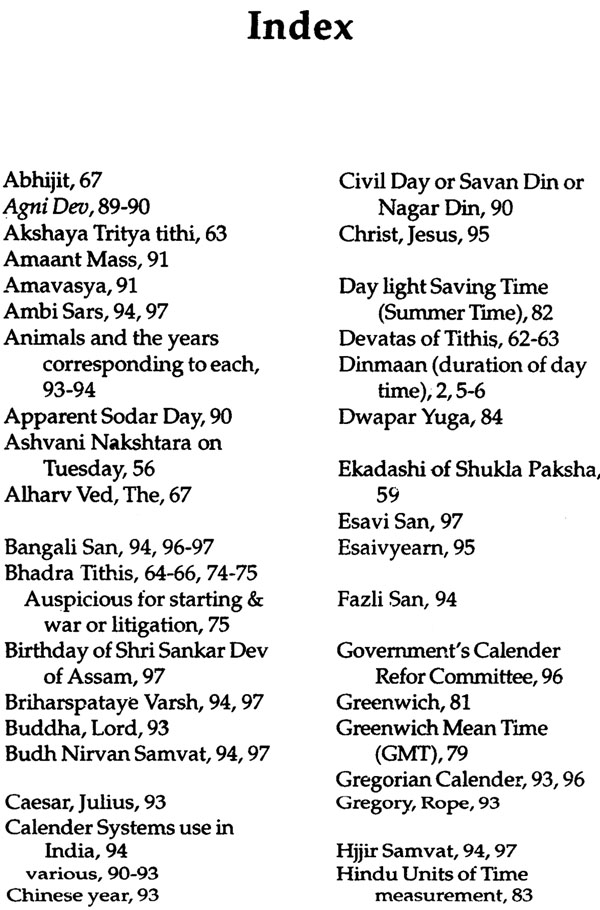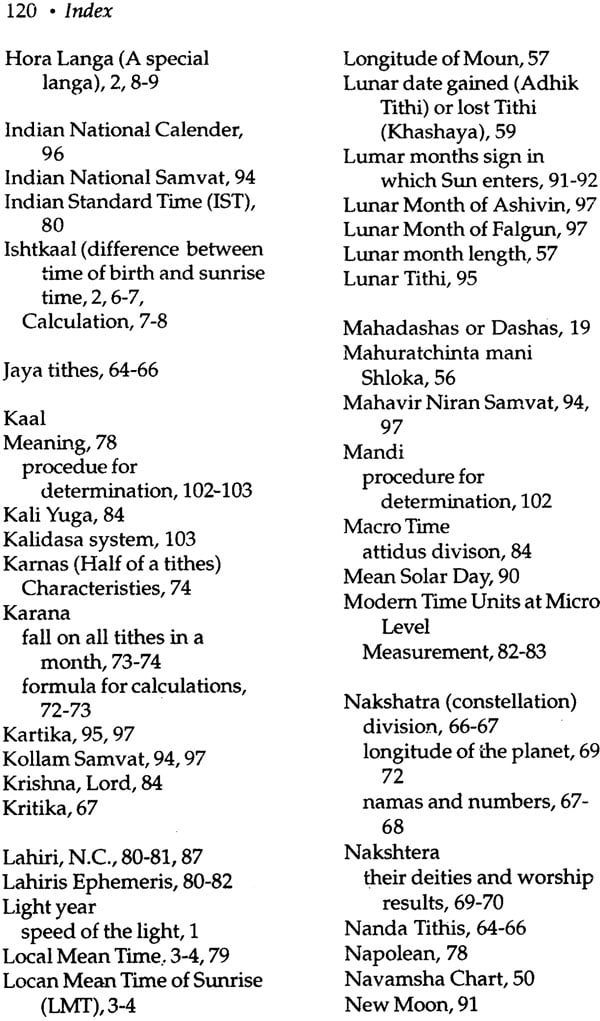
Astrological Concepts Worked Out And Explained
Book Specification
| Item Code: | NAD922 |
| Author: | Dr. Prem Kumar Sharma |
| Publisher: | UBS Publishers’ Distributors Pvt.Ltd |
| Language: | English |
| Edition: | 2011 |
| ISBN: | 9788174766779 |
| Pages: | 133 |
| Cover: | Paperback |
| Other Details | 8.5 inch X 5.5 inch |
| Weight | 210 gm |
Book Description
It is a well-established fact that since Vedic astrology has its basis in Vedic knowledge, it is as old as human creation and has been used from time immemorial to dispel the unfounded horrors and prejudices of the human mind. Rahu and Ketu, the two nodal points of the Moon, constitute the core of Vedic astrology, Ancient Indian seers visualised the north and the south nodes of the Moon as the most interesting and mysterious planetary influences. However, Rahu and Ketu have either been ignored or misunderstood in studies of Vedic astrology. This book is an attempt to dispel the darkness that surrounds Rahu and Ketu so that they can be better understood and their importance in Vedic astrology appreciated. By no means the final word on Rahu and Ketu, this book attempts to provide readers with a practical understanding of these two nodes sø that they can be placed in perspective. After a reading of the book, readers will realise why the two nodes of the Moon are worthy of being called the heroes of Vedic astrology. The book also provides other insights into Vedic astrology. The use of horoscopes of some prominent persons makes an understanding of Rahu and Ketu easier both for astrology enthusiasts and for other readers.
A full time astrologer for over a decades Dr Prem Kumar Sharma has carved a niche for himself in this field. His predictions have been chronicled in leading newspapers like Hindustan Times, Indian Express, Times of lndia, The Tribune, Hind Samachar and Punjab Kesri. Besides providing astrological content to Hindustan Times on a regular basis Dr. Sharma also answers general queries from the public everyday for the newspaper. He also contributes his weekly and birthday thoughts to the News India Group Publication and The South Asian Newspaper based in New York.
A familiar face on television, Dr. Sharma has regular programmes on Star News, Sahara Samay, FTC News, FTC Punjabi and PTC Chak De. Also he is invited occasionally by a number of television channels including Zee News, News 24, IBN7, Zee Jagran, Aaj Tak, India TV and CNN for making various predictions.
Dr. Sharma has received a number of awards for his contribution to the field of astrology, including the prestigious Best Vastu Consultant (2008), Gem of India, Rashtriya Rattan Award (2002) and the Pride of lndia Award (2002) by the All India Achievers Conference. He has a number of books on Astrology, Numerology Vastu, day by day predictions etc. to his credit.
Before the PC (Personal Computer) came into existence the traditional astrologers had to spend many hours and even days to cast a detailed horoscope. There was always doubt as regards the accuracy of a hand made horoscope. A small mathematical mistake could result in wrong information and inaccurate predictions.
That is why the importance of mathematical skills required by an astrologer is mentioned in the following shloka of Brihad Parashara Horashastra.
‘Ganiteshu praveeno ye shabdshastrey kritshramey, niyayevidbhudhiagedikkaalagyo jitendriye’ ‘Uhapohpaturhoraskandhshravansamrnatey, maitreye satyataam yati tasyai vakayam na sanshehai’
In these shlokas Maharishi Parashara describes the required characteristics of a good astrologer. A person who is expert in mathematics, grammar and logic and is intelligent and takes into account time and place, one who is master of his senses and is able to visualize and has studied the astrological scriptures, such a person only can predict accurately.
Nowadays easy access to computers and availability of good astrological softwares have revolutionized the scenario by making available accurate and detailed horoscopes. In spite of this a progressive astrologer needs to sharpen his or her mathematical skills so that in the absence of a computer he/she can work out some formulae.
There are quite a few books on mathematical astrology and after going through some of these the following came to my mind.
Mathematical topics generally appear very uninteresting so some interesting style and presentation is needed.
All formulae and mathematical procedures need to be well explained in detail so that applying them is easy.
A few concepts after being worked out need to be well related to the predictive part of astrology so that their practicality can be appreciated.
These are a few points, which inspired me to go ahead and present to my readers a humble book on the topic. I hope you not only enjoy this book but also benefit from it.
The western scientists have always been amazed at how the ancient Hindu seers revealed many secrets of nature centuries before even the western civilizations came into existence.
The theory of relativity put forward by Einstein in the previous century was taken as something extraordinarily new and fantastic but our scriptures have detailed accounts of Time Travel, Different Time Continuums, Travelling at the speed of Thought, etc.
The discovery of atom is only couple of centuries old but our Vedic literature talks about Anu and Parmanu and lot more. The concept of Precession of Equinoxes discovered and calculated precisely by Hindu seers still puzzles the western scientists as to how without modern equipment this was done
The accurate and precise mathematical base of Vedic astrology is responsible for depth and accuracy of our predictions. In those days, weeks, and even months, were spent in making all the intricate calculations and arriving at accurate results.
Now all this has been made easy and fast by the modern day computers and advanced software.
For many people mathematical calculations tend to be boring. Keeping this in mind I have tried to give practical utility of formulae and calculated results so that these could be directly utilized in predictive astrology.
There are in all seven chapters. The first chapter is about Sunrise and Sunset times. Due to the round shape of our earth sun rises and sets at different times at different places. Accurate determination of these timings is important. These timings are then used in various other formulae as described in this chapter.
The sequence of planetary periods is very important feature of Vedic astrology. There are many systems of these periods but the most accurate and hence popular is the Vimshotri Dasha System. The second chapter describes how to - calculate the periods and their sequence starting from the date of birth of a native and then how these dasha effects can be predicted.
Two charts have also been analysed to show the dasha effects.
Panchaang or five constituents, viz, lunar day, weekday, constellation, yoga and karna carry special importance in astrology and the science of Mahuratas (electing auspicious times). Chapter three is therefore devoted to these five factors. This chapter also contains plenty of useful and practical information
The chapter four is on ‘Time.’ Time has two basic aspects; one is the micro time or time on smaller scale and the other is macro time or time on larger scale. Both these aspects are described in detail in this chapter.
The concept of Sidereal Time is very important as modem methods of casting a birth chart utilize this; hence a separate chapter, the chapter five, is devoted to Sidereal Time. A precise method of converting the 1ST (Indian Standard Time) to Sidereal Time is given with example. There are various calendar systems in use and one needs to understand these. Conversion of one from the other is also given in the chapter six which is titled, ‘Various Calendar Systems’. Apart from other systems the Vikrami and Shak Samvats used in India are also described in this chapter.
The last chapter deals with the calculation and practical utility of the nine upgrehas or sub planets of Vedic astrology. In addition to the nine planets there are nine sub-planets or upgrehas. These are only mathematically calculated strategic sensitive points capable of astrological influences. This chapter also gives the results of two upgrehas commonly used in predictive astrology, viz. Dhoom and Gulik. Some charts have been analysed to show the effects of these two sub planets.
I hope this book, like my previous hooks, will become your constant companion guiding you and enriching your knowledge at each step.
| Preface | VII | |
| Introduction | IX | |
| Chapter 1: | Sunrise ans Sunset Times | 1 |
| Chapter 2: | Vimshotri Dasha System | 12 |
| Chapter 3: | Panchaang | 54 |
| Chapter 4: | Time | 78 |
| Chapter 5: | Sidereal Time | 85 |
| Chapter 6: | Various Calendar Systems | 89 |
| Chapter 7: | Upgrehas | 99 |
| Index | 119 |
